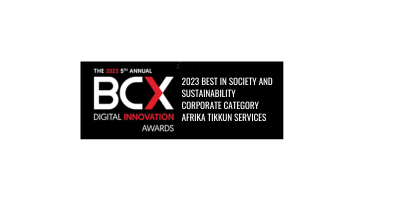AS SOUTH Africa commemorated Workers’ Day on Monday, youth-focused organisations highlighted how the country’s young people are struggling to secure jobs.
They also highlighted the importance of support skills development and placement initiatives, as well as entrepreneurship.
Young people aged 15-24 and 25-34 are the most vulnerable in the South African labour market today, with the unemployment rate in these age groups reaching 61% and 39.9%, respectively, last year, according to Afrika Tikkun Services.
The Level 1 Broad-Based Black Economic Empowerment advisory, recruitment, training and placement company’s chief executive, Onyi Nwaneri, said this staggeringly high unemployment rate should be cause for grave concern.
“Not only are young people excluded from participating in the labour market, denying them their right to work towards income security, they are also unable to lead lives of dignity.”
She said there were a number of reasons why the country’s youth struggled to secure employment.
“Most notably is an increasingly skills-intensive labour market that is failing to create jobs for millions of unskilled youth. This, together with a deteriorating education system, which continues to churn out a workforce that is largely unskilled, has resulted in the gross mismatch between labour supply and demand, suggesting that skills development programmes should become a priority.”
She said young people lacked the basic framework, language and practical experience necessary to develop their professional behavioural competencies – the soft skills-needed to prepare them for work. They also lacked the technical skills for in-demand jobs and services that would enable them to enter the job market or set up their own enterprises.
Nwaneri said solving this problem required collaboration among various sectors, which could complement each other’s efforts.
She said this started with committed funders deploying grants to support skills development and placement initiatives.
“The government contributes with its incentives that encourage employers to take calculated risks and reform HR practices to accommodate youth. Training providers can focus on skills development programmes that include job-readiness skills, demand-driven training and entrepreneurship.
“Non-profit organisations and local government services provide the psycho-social support that promotes social inclusion and resilience. Business needs to create opportunities for youth through workplace skills placements and job opportunities, and finally the youth themselves, who need to be motivated and committed to the programme.”
Nwaneri said that while this multi-tiered collaboration could not replace economic growth as a strategy for improving employment outcomes, it could, nevertheless, play a crucial role in supporting young people and offering bridges to the world of work.
Without this the country could expect to see an increasing sense of exclusion among young people, heightened levels of frustration and lower levels of physical and mental well-being, which would then inevitably feed the vicious cycle of unemployment and poverty.
Nwaneri said the outlook for employment in South Africa was challenging, given the country’s socio-economic environment, with young people being disproportionately affected by unemployment compared to other age groups.
This was due to a range of factors, including a lack of skills and training opportunities, limited access to finance for entrepreneurship, and an economy that has not grown at a rate that creates enough jobs.
Meanwhile, National Youth Development Agency (NYDA) chief executive Waseem Carrim said South Africa had one of the highest unemployment rates and youth unemployment rates globally, describing it as a full blown national crisis.
“South Africa faces a triple challenge of poverty, inequality, and unemployment. In addition to the divides of geography, race and education, Covid-19 has exacerbated the divide between those who are employed, have jobs and are ‘included’ in society, and those who are unemployed and are ‘excluded’. Women and young people have always struggled more in the labour market, and the pandemic has made them significantly worse off,” Carrim said.
He said South Africa’s economy had been stuck at a low level, with low GDP, stagnant fixed capital formation and a falling GNI per capita.
“The status quo will not self-correct – a big push is required to achieve a higher equilibrium. South Africa spends significantly (across public and private institutions) on education and skills development, with very low returns on investment leading to poor impact.
“Youth unemployment is the greatest concern, with two-thirds of the more than one million young people entering the labour market each year not in any form of employment, education or training.
“Food poverty has increased for several years, with almost one-in-five households reporting going hungry on a regular basis. This must be addressed in the short term while we achieve higher growth and employment in the long-run,” Carrim said.
The NYDA believed the greatest potential for job creation lay with small businesses and in the informal sector.
This as the formal economy served as the growth engine for the South African economy, contributing to 85% of economic output with relatively high productivity in all major economic sectors.
“However, self-employment represents only 10% of all jobs, compared to 30% in most upper middle-income countries such as Turkey, Mexico and Brazil. If South Africa were to match the self-employment rates of our peers, we could potentially halve our unemployment rate.
“The only solution to unemployment in the long term is to achieve higher and more inclusive economic growth. If economic reforms are not implemented to address the binding constraints on economic growth, employment will not grow and additional social spending will not be sustainable.
“However, in the short term, public employment and social spending act as an important buffer to provide work experience and pathways for young people,” Carrim said.


